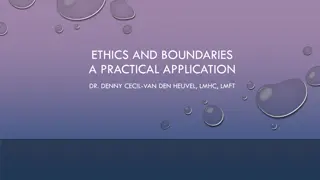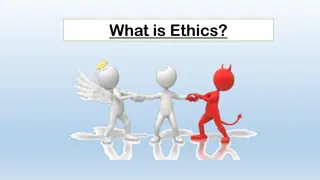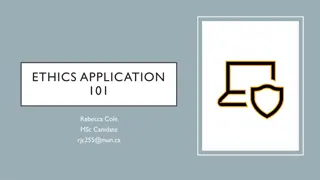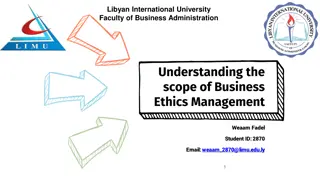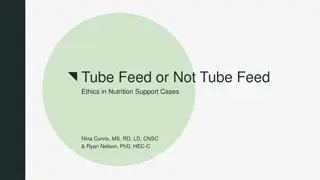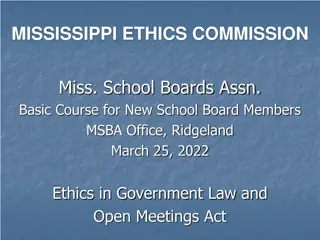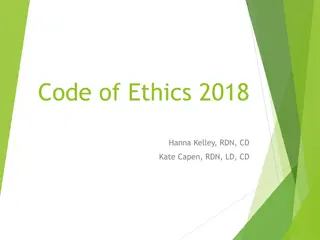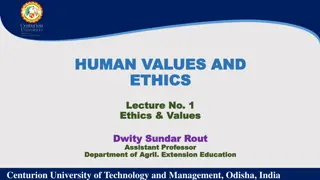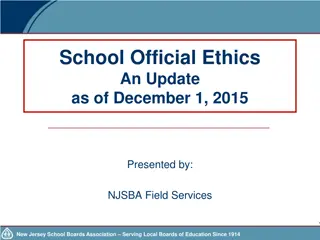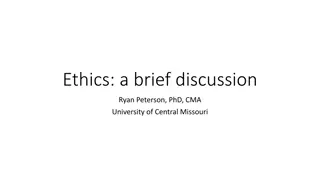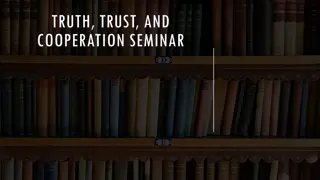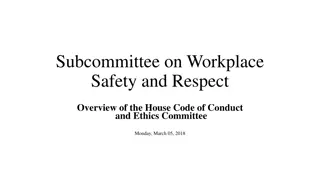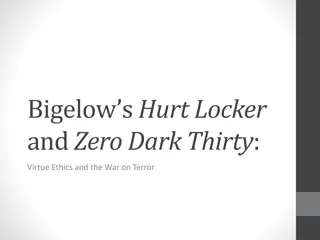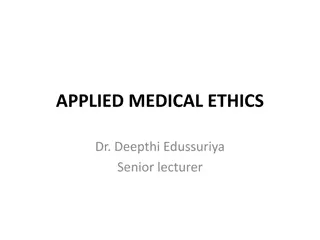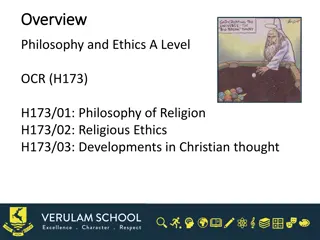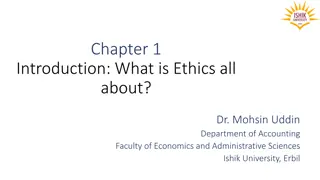
Exploring Biofabrication: Growing Leather, Meat, and Animal Products
Discover the innovative practice of biofabrication, a sustainable approach to growing leather, meat, and animal products to meet the increasing demands of the growing human population. However, potential challenges such as ethical concerns for factory workers and cultural divides are also explored.
Download Presentation

Please find below an Image/Link to download the presentation.
The content on the website is provided AS IS for your information and personal use only. It may not be sold, licensed, or shared on other websites without obtaining consent from the author. If you encounter any issues during the download, it is possible that the publisher has removed the file from their server.
You are allowed to download the files provided on this website for personal or commercial use, subject to the condition that they are used lawfully. All files are the property of their respective owners.
The content on the website is provided AS IS for your information and personal use only. It may not be sold, licensed, or shared on other websites without obtaining consent from the author.
E N D
Presentation Transcript
BIOFABRICATION By Miranda and Elsie
The process of biofabrication is a practice of growing leather, meat, and animal products. This practice is a proposed solution to the growing need for meat products with the growing human population, without the need for growing the livestock population. Simple term
The possibility of inhumane and unethical factory conditions for the biofabricated meat product factory workers Problem:
In order to investigate biofabrication and find a dilemma, we asked the following questions: DISCOVER
A: If biofabrication gets implemented into our society, this could cause more divisions between people because some people could get mad at the Inuit for using seals for food and clothing (and already do) when the Inuit use it sustainably, using every part of the animal and honouring it. In the source below it even talks about how using the seal for clothing is how they honour the seal for its sacrifice so they could eat. Q: How could this technology cause divisions between groups of people? Sources: "Seal Fur & Seal Skin Leather." Proudly Indigenous Crafts & Designs. Web. 16 May 2022.
Q: How could this technology cause problems for those working with it? A: Biofabricated leather will be made in factories, and factories are known for having terrible working conditions. Sources: TED. Leather And Meat Without Killing Animals. 2013. Web. 12 May 2022. "Working Conditions Sustainyourstyle." SustainYourStyle. Web. 16 May 2022.
A: A concern about this product being curated in a lab in the texture and taste. This Ted talk talked about how you can control what the meat product looks like and for the most part the texture, but the taste is uncertain for every product. Q: What is the quality of this product? Forgacs, A., 2013. Leather and meat without killing animals. [online] Ted.com. Available at: <https://www.ted.com/talks/andras_forgacs_lea ther_and_meat_without_killing_animals> [Accessed 18 May 2022].
A:Some opinions we found were, The cost will rise because of the price of building the factories and the general factoring process. The contrary to this is that it will be expensive in the beginning, but once the process is broadly used it becomes more affordable. Vegetarians may start eating meat excessively because they haven t eaten it in while. and With most North American Indigenous practises using the whole animal carcass, it is a lot more sustainable and can still be supported. Q: Is there any strong opinions on the topic affecting the process launch? Week, T., 2018. The pros and cons of lab-grown meat. [online] Theweek.co.uk. Available at: <https://www.theweek.co.uk/96156/the-pros- and-cons-of-lab-grown-meat> [Accessed 18 May 2022].
A: This product with affect the growing and future human population and the livestock for two reasons. The first being, humans will have more food to sustain our growing need, without having to push the growth of livestock. Second being, with need for less livestock, we can have more space for housing to also sustain the growing population. Bonus, we get groups like Peta off our backs about going vegan and helping the animals. Q: Who does this process affect? How? Forgacs, A., 2013. Leather and meat without killing animals. [online] Ted.com. Available at: <https://www.ted.com/talks/andras_forgacs_lea ther_and_meat_without_killing_animals> [Accessed 18 May 2022].
A:We decided, using the opinion based information from this The Week post, that it would be best if this form of making meat was slowly intergrated to replace the current system. We think it should take the old meat slaughtering factories and convert them into these new breweries . We also agreed though that there should be a few conditions to completely getting rid of the slaughter houses, hence it will be a slower process. Q:How should it be distributed? Week, T., 2018. The pros and cons of lab-grown meat. [online] Theweek.co.uk. Available at: <https://www.theweek.co.uk/96156/the-pros- and-cons-of-lab-grown-meat> [Accessed 18 May 2022].
Solution ideas Secondly, they should fix their problems as soon as possible, before it goes global, so that less resources are wasted fixing simple problems The main thing they need to work on is their listening to the employees, mainly by probably getting them a union as the third party for communication. Thirdly, looking at past and present examples of bad work situations for employees. A solution is to even hire a historian to go over certain problem areas they should fix.
BIOFABRICATION START UP The only manage problem or dilemma we found with this integration of technology and cells as far as ethics were that the factories make sure they take care of the staff. We think this is a great idea that just need more public awareness.

